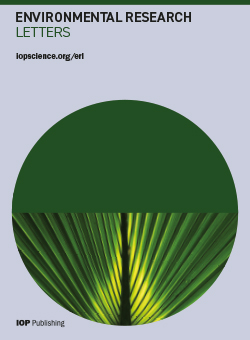解读卫星像素:无人机揭示冬季降雨灌木林地地表物候的细微驱动因素
IF 5.8
2区 环境科学与生态学
Q1 ENVIRONMENTAL SCIENCES
引用次数: 0
摘要
地表物候学(LSP)可以揭示植被动态与气候之间的重要联系,但对全球常绿冬雨灌木林地的地表物候学仍然知之甚少。基于实地的研究表明灌木林地的植物功能策略多种多样,但要将地表物候与这些地区的植被功能组成联系起来,还需要进一步的工作。我们利用卫星和无人机拍摄的多光谱图像,分析了南非芬博斯灌木林归一化差异植被指数(NDVI)的时间序列。我们在从景观到单个物种的多个空间尺度上研究了季节性植被物候和长期 NDVI 趋势的气候驱动因素。在较粗的空间分辨率下,NDVI 时间序列表明,在年际和年内的时间尺度上,降雨驱动了森林植被的动态变化。然而,来自无人机的高分辨率时间序列揭示了植被物候学的潜在差异,以及浅根和深根生长形式之间的长期归一化差异植被指数趋势。相对于茂密的上层灌木和浅根的下层生长形式,孤立的深根上层灌木的物候和 NDVI 趋势与降雨脱钩。由于植被功能组成的比例和竞争效应,在较粗的空间尺度上无法检测到生长形态物候的变化。本文章由计算机程序翻译,如有差异,请以英文原文为准。
Unpacking satellite pixels: UAVs reveal fine-scale drivers of land surface phenology in a winter rainfall shrubland
Land surface phenology (LSP) can reveal important connections between vegetation dynamics and climate but remains poorly understood in evergreen winter-rainfall shrublands globally. Field-based studies have indicated diverse plant functional strategies in shrublands, but further work is required to link LSP to vegetation functional composition in these regions. We analysed time-series of the normalised difference vegetation index (NDVI) in fynbos shrublands of South Africa using multi-spectral imagery from satellites and unmanned aerial vehicles (UAVs). We investigated the climate drivers of seasonal vegetative phenology and long-term NDVI trends at multiple spatial scales ranging from the landscape to individual species. At coarse spatial resolutions, NDVI time-series indicated rainfall-driven vegetation dynamics in fynbos, both at inter and intra-annual time scales. However, high-resolution time-series from UAVs exposed an underlying divergence in vegetative phenology and long-term NDVI trends between shallow and deep-rooted growth forms. Phenophases and NDVI trends of isolated, deep-rooted, overstory shrubs were decoupled from rainfall relative to dense overstory patches and shallow-rooted understory growth forms. Variations in growth form phenology were not detected at coarse spatial scales due to scaling and competitive effects based on the functional composition of the vegetation.
求助全文
通过发布文献求助,成功后即可免费获取论文全文。
去求助
来源期刊

Environmental Research Letters
环境科学-环境科学
CiteScore
11.90
自引率
4.50%
发文量
763
审稿时长
4.3 months
期刊介绍:
Environmental Research Letters (ERL) is a high-impact, open-access journal intended to be the meeting place of the research and policy communities concerned with environmental change and management.
The journal''s coverage reflects the increasingly interdisciplinary nature of environmental science, recognizing the wide-ranging contributions to the development of methods, tools and evaluation strategies relevant to the field. Submissions from across all components of the Earth system, i.e. land, atmosphere, cryosphere, biosphere and hydrosphere, and exchanges between these components are welcome.
 求助内容:
求助内容: 应助结果提醒方式:
应助结果提醒方式:


